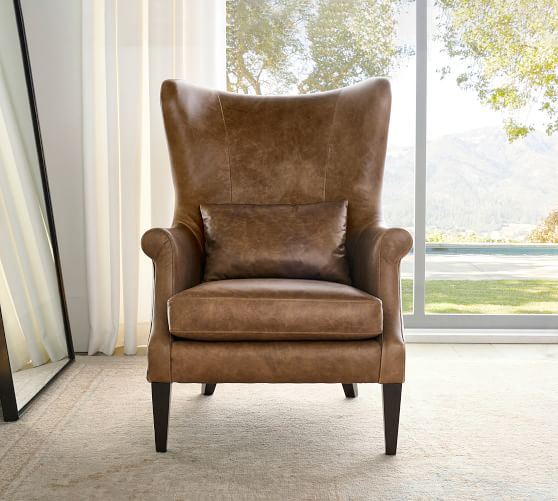Leather chairs have been around for generations, and their history is as diverse as the materials used to make them. Leather seats have played a vital role in our lives, symbolizing power, elegance and comfort from ancient civilizations to modern times. In this article, we’ll look at the history of leather chairs, examining the evolution of these iconic pieces of furniture as well as their ongoing appeal.

The History of the Leather Chair
-
The Origins of Leather Chairs
Leather chairs have a long history, dating back to ancient civilizations, when animal hides were utilized for a number of reasons. For example, the Egyptians utilized leather to make furniture, clothing and even their famed pyramids. Leather was also appreciated by the Romans for its toughness, and it was used to produce sandals, belts, armor, and furniture.
Leather chairs, on the other hand, did not become fashionable until the Middle Ages. It was widely utilized for upholstery during the time, and chairs were no exception. The leather chairs of wealthy aristocrats and royalty were often decorated with complex designs and patterns.
-
Leather Chairs in the Renaissance
As craftsmen began to experiment with new designs and techniques throughout the Renaissance, it was a watershed moment in the history of leather seats. Chairs became more opulent, with carved and gilded frames and rich pattern and color leather upholstery. Some chairs even had armrests and cushions, which added to their comfort and luxury.
The Savonarola chair, named after the Italian monk who was supposed to have used it during his sermons, is one of the most famous examples of Renaissance leather seats. The seat and backrest were supported by leather straps on this chair, which had a basic folding construction.
-
The Age of Enlightenment and Leather Chairs
The Age of Enlightenment brought new ideas about science, philosophy and politics. And the 18th century was a time of enormous intellectual and cultural transformation. The rise of neoclassical design, with its emphasis on simplicity, symmetry and beauty, occurred throughout this time period as well.
Classic designs that emphasized clean lines and beautiful curves reflected similar ideas in leather seats from this era. Some chairs were made of wood and had leather upholstery, while others had sleek metal frames and minimalist leather seats.
-
The Industrial Revolution and Leather Chairs
The nineteenth-century Industrial Revolution brought about considerable changes in the way furniture was manufactured. Chairs could now be created quickly and efficiently thanks to mass production techniques and new materials.
Leather chairs, on the other hand, remained popular, thanks in part to a growing middle class that could afford such luxury. Leather chairs from the Victorian era were frequently extravagant and overstuffed, with tufted leather upholstery and beautiful wooden frames.
-
Leather Chairs in the20th Century
From Ludwig Mies van der Rohe’s classic Barcelona chair to Arne Jacobsen’s futuristic Egg chair, the twentieth century saw a wide spectrum of leather chair designs. Leather chairs have been utilized in a variety of situations, including homes, offices and public areas.
Leather seats became associated with the sleek, futuristic styles of the Space Age in the mid-twentieth century. Chairs like the Eames Lounge Chair and the Wassily Chair reflected the new era of technology and innovation with clean, sculptural designs and minimalist leather upholstery.
-
Today’s Leather Chairs
Leather chairs are still popular today, owing to their timeless appeal as well as their flexibility to adapt to shifting design trends. Leather seats come in a variety of forms and shapes, ranging from classic Chesterfield couches to futuristic recliners.
Today, one of the most popular trends in leather seats is sustainability. Several furniture firms now utilize eco-friendly materials and ethical production processes to ensure that their goods have a low environmental impact.
Leather chairs are also being used in novel ways, such as in the hospitality industry. Hotels and restaurants are embracing leather’s opulent look and feel, using it to create welcoming and attractive places for their visitors.